In this article we propose 10 neurorehabilitation activities to work with people with Alzheimer’s.
Alzheimer’s disease involves the development of multiple cognitive deficits, including memory impairment and the alteration of functions such as language, praxias, gnosias, or executive functions. The progressive loss of these cognitive abilities makes it important to address those areas to achieve a delay in the evolution of dementia. Some of the most common symptoms are memory loss, confusion, lack of attention, or mood changes. These indicators help with the early detection of Alzheimer’s, which is vital to slow down, as much as possible, its effects with cognitive stimulation. Appropriate intervention in the early stages of Alzheimer’s Disease by a professional in neurorehabilitation stimulates the creation of new neural connections.
The NeuronUP cognitive stimulation program allows neuropsychologists and occupational therapists to adapt each activity to the particularities and needs of each user, delaying the neurodegenerative effects of the disease. The examples of cognitive stimulation exercises for people with Alzheimer’s that we describe here have been developed by NeuronUP professionals and have been designed to train cognitive skills involved in the main functions of daily life, and are available to all professionals who work with the neurorehabilitation platform. Also, we remind you that these are only examples and, depending on the resources at hand, there can be many variants.
Below we propose 10 neurorehabilitation activities to work with people with Alzheimer’s
1. Household Objects
What does it involve?
This activity makes the therapist’s work much easier because it is very familiar to the patient. The person is presented with images of various objects that they must organize into the corresponding rooms of the house.
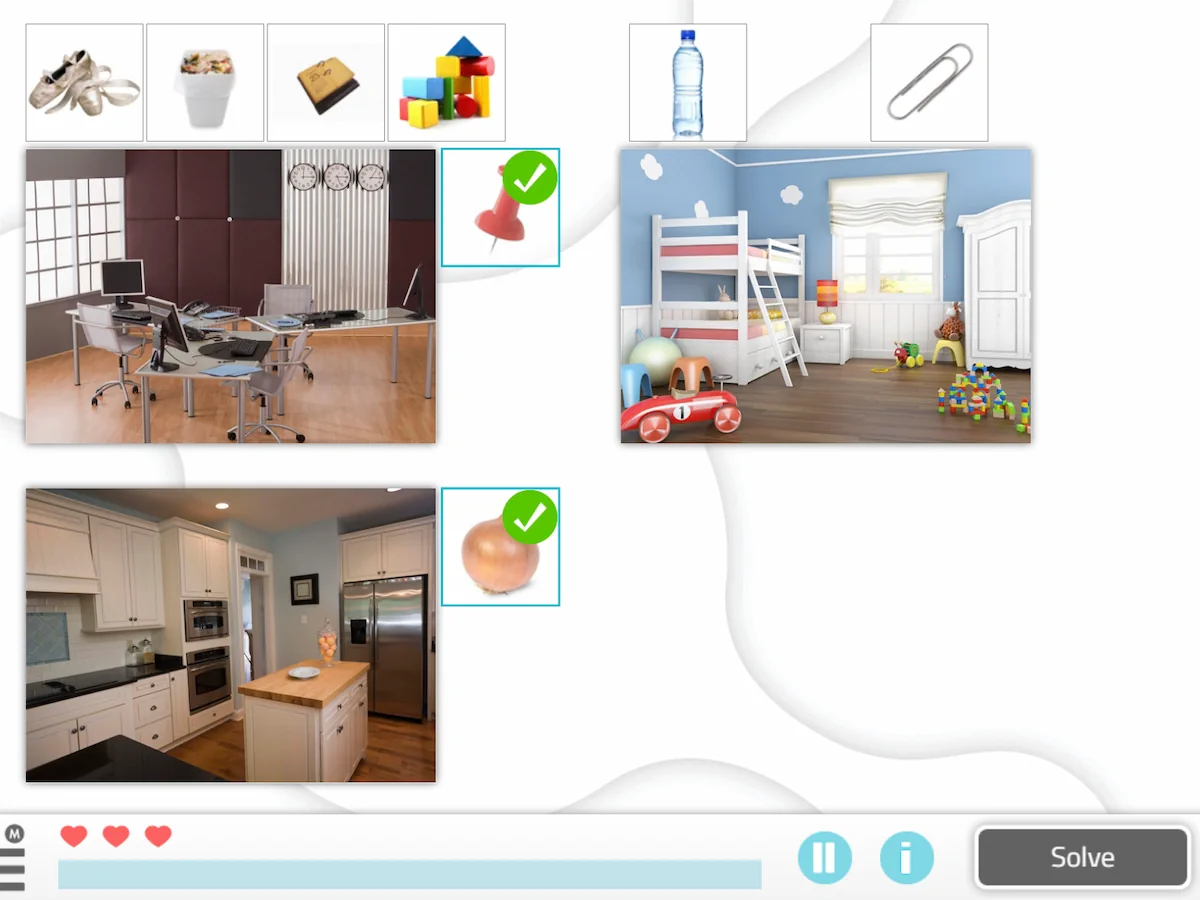
What does this activity target?
In addition to maintaining this everyday activity, it works on semantic memory and reasoning.
3. Get Dressed
What does it involve?
An activity that the family will greatly appreciate you working on with the person with Alzheimer’s. It consists of dressing the silhouette appropriately, taking into account both the place and order of placement of each garment and the type of situation.
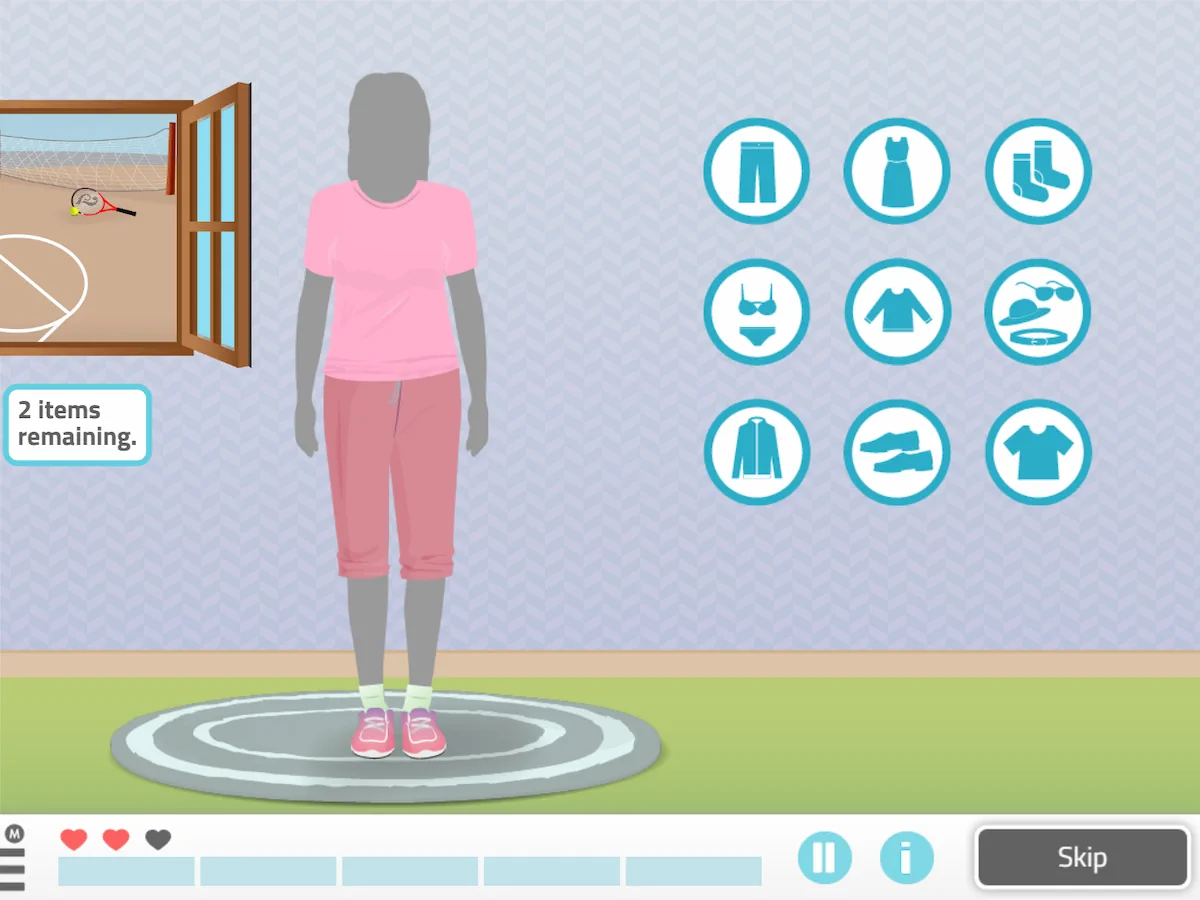
What does this activity target?
With this exercise we work on procedural memory, body schema, ideational praxis, semantic memory and planning.
Play by levels
In the easiest levels there are fewer commands and more program cues to perform the activity correctly, while in the more difficult levels the cues decrease and the dressing requirements are more complex
Activity personalization
Parameters
You can select the number of garments, the scenario, whether to include any type of distractor, the errors that can be made, the presentation of the garments, etc.
Also, you can personalize the activity to adapt it to the needs and abilities of each user.
General aspects
You can adjust general aspects such as the number of exercises, maximum time, whether or not you want a visible timer for the activity, modify the instructions, etc.
Adaptability
Finally, you can select whether you want the movement of the clothing items to be draggable or whether just pressing the item selects it. Depending on the user’s functionality, one option or the other can be chosen.
5. Objects, places and professionals
What does it involve?
In this cognitive stimulation exercise for people with Alzheimer’s you must relate various objects to the places where they are obtained and the professionals who are in charge of them. From this type of activity we can work many alternatives; starting with something as simple as varying the places and objects each time.
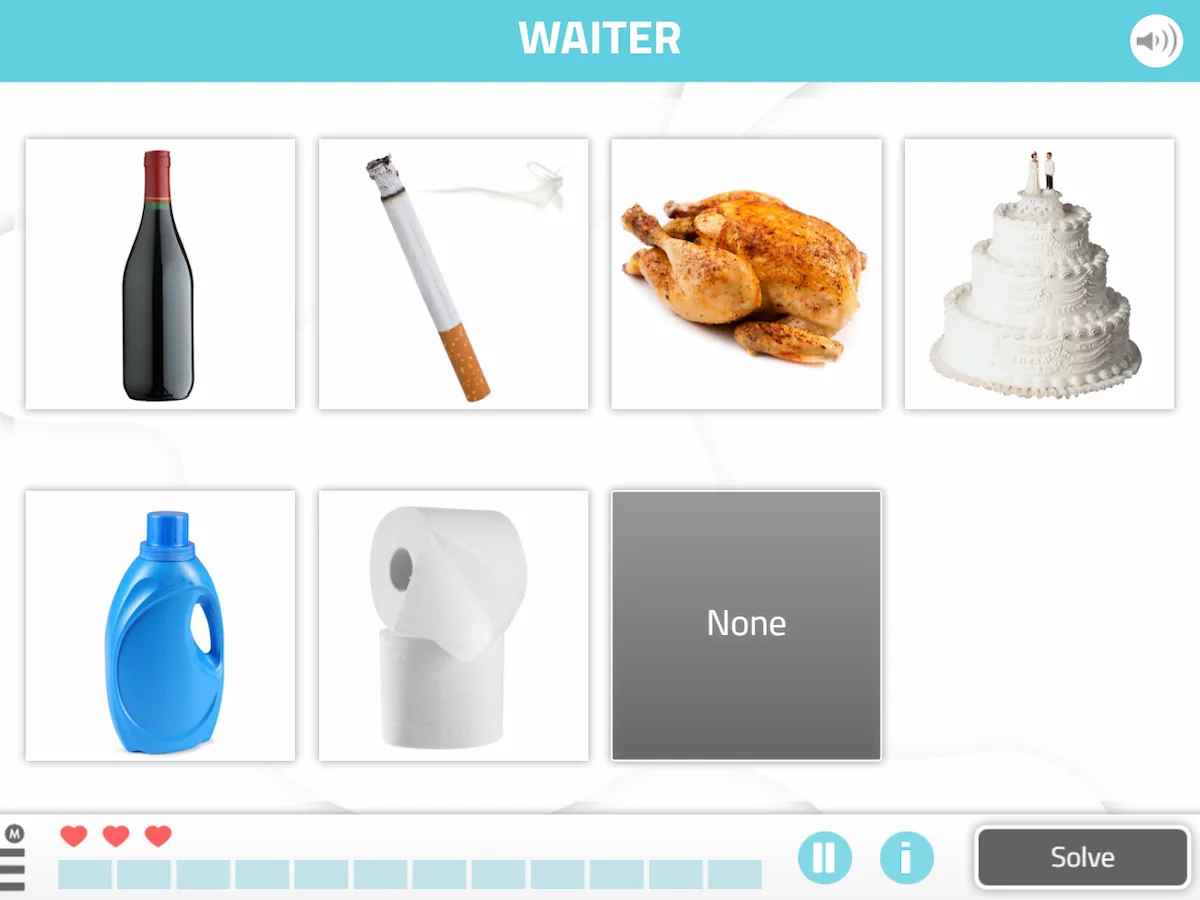
What does this activity target?
We work on semantic memory, place orientation and gnosias.
6. Task Sequencing (Picture-Only)
What does it involve?
Sequencing, a classic of stimulation and neurorehabilitation, is another type of activity that leaves us a lot of room for creativity. How many daily actions can we divide into sequences! The idea of the exercise is simple: order a series of images according to a previously established criterion (temporal, visual, etc.).
In this example, the person receiving neurorehabilitation must put in order the different steps necessary to wash the dishes.
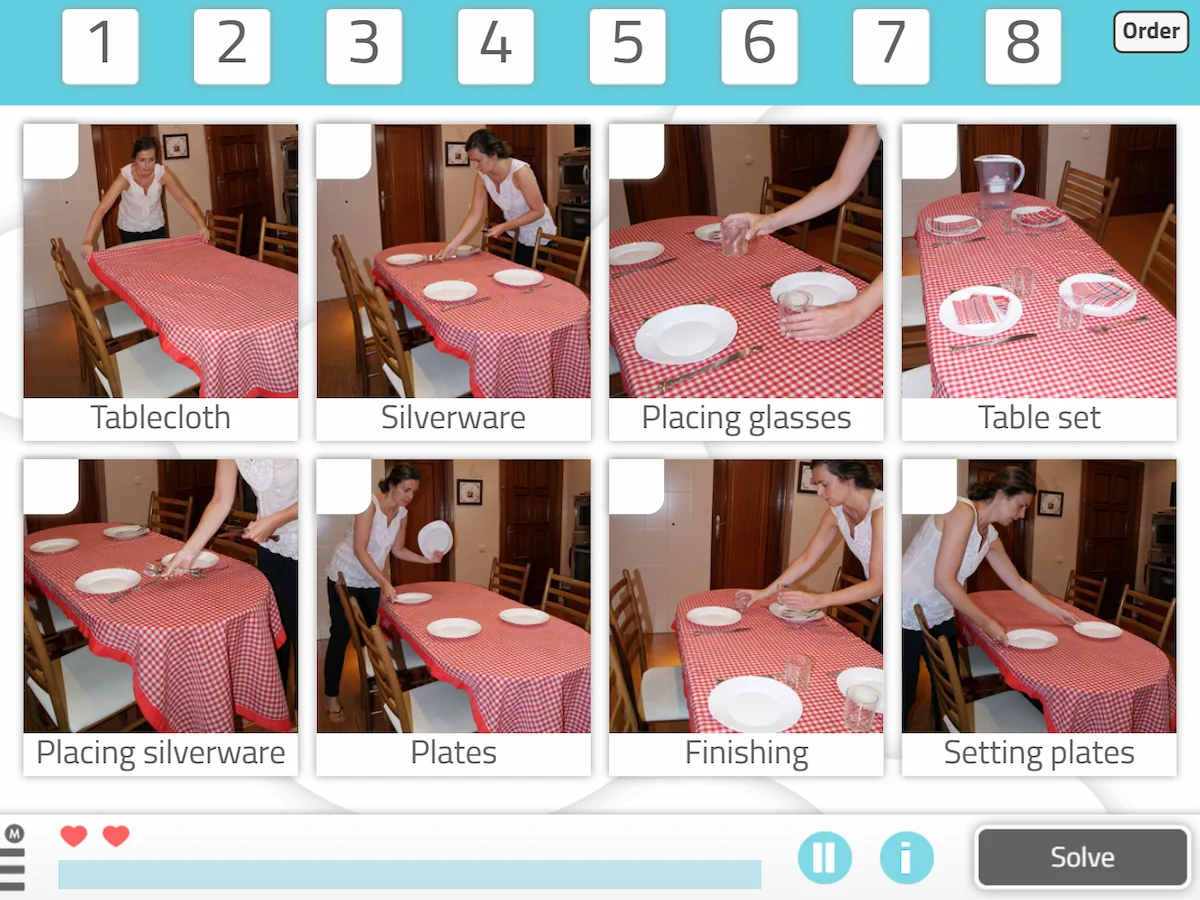
What does this activity target?
It is used to work on executive functions.
7. Memorize the orden
What does it involve?
Another sequencing exercise that allows you to appreciate how much can be gained from this type of activity. In this case, the therapist asks the user to memorize the order of the animals shown. Subsequently, the person with Alzheimer’s must order them in the boxes according to the order of appearance.
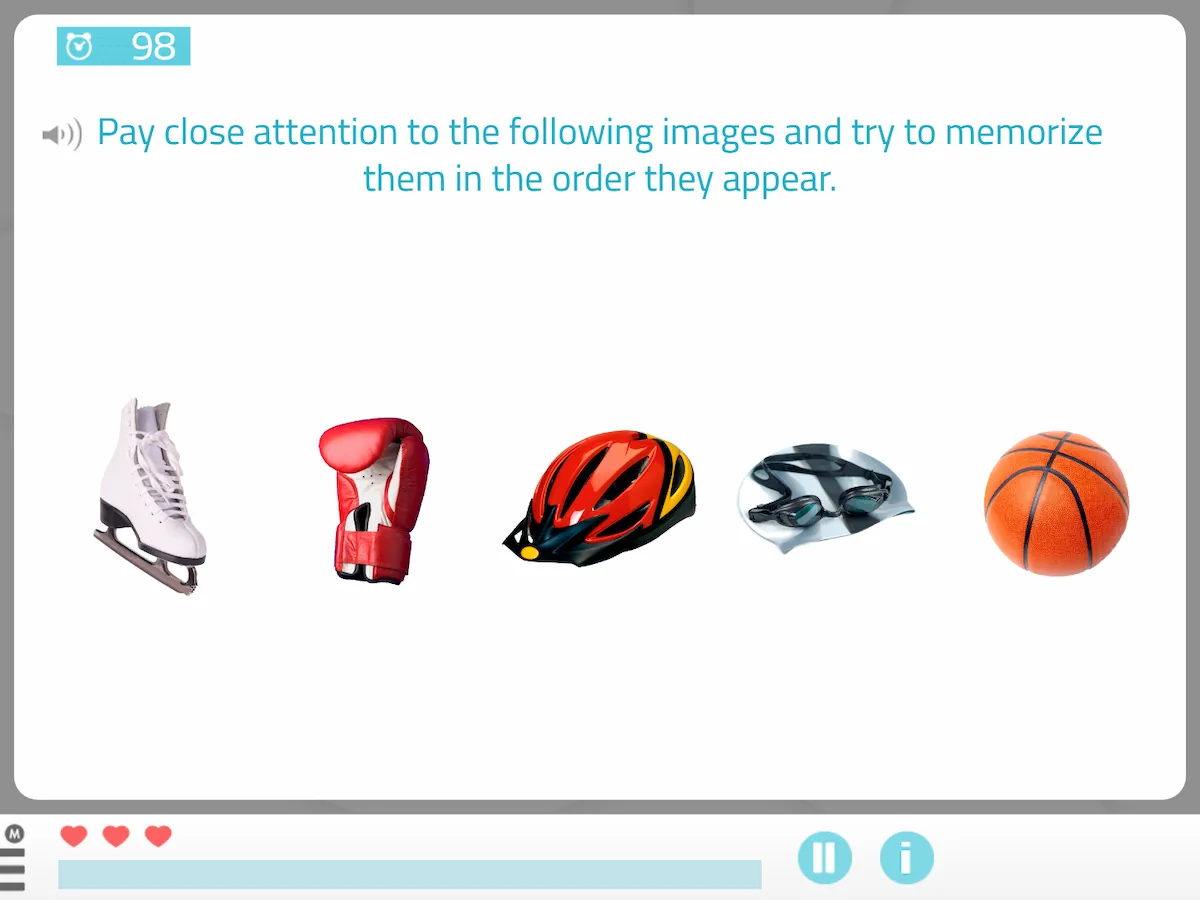
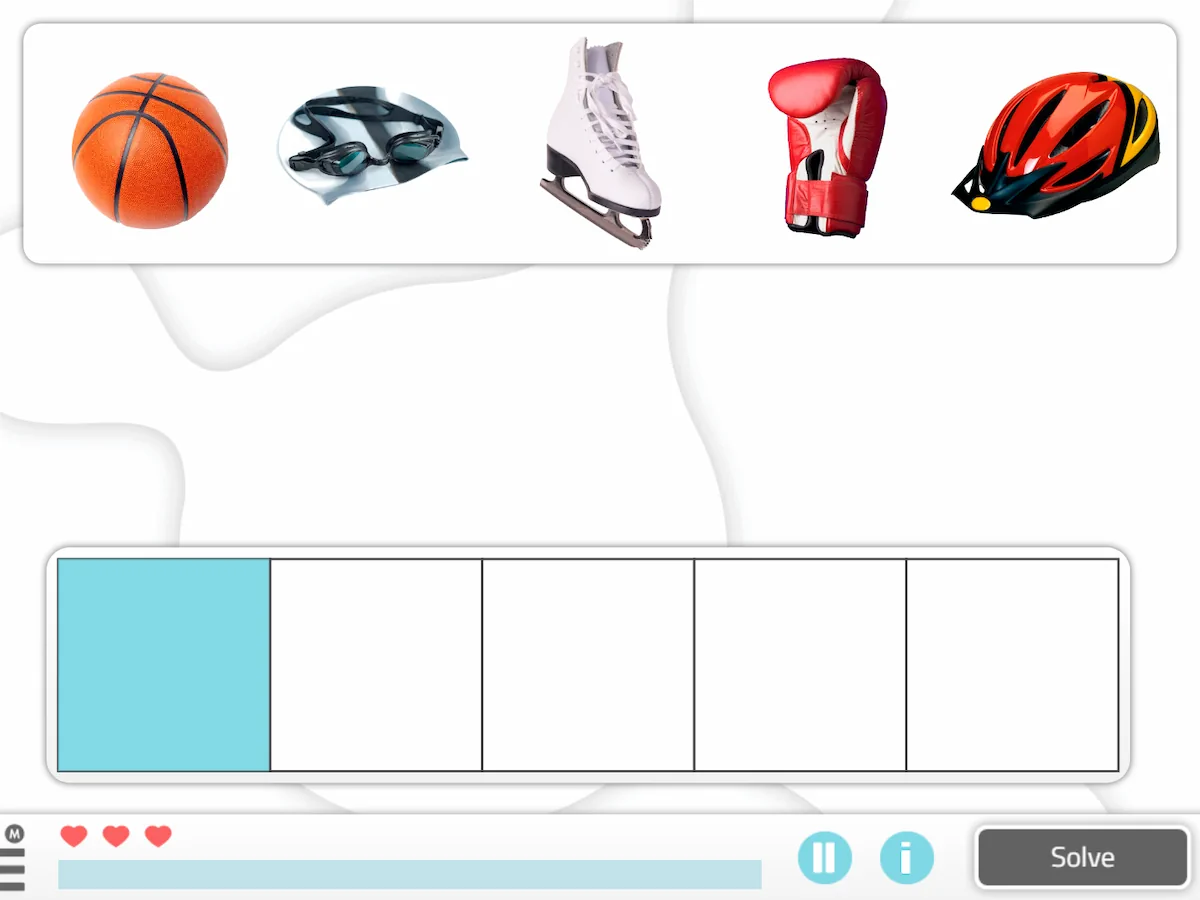
What does this activity target?
It works on episodic and working memory.
8. Word Search
What does it involve?
This activity consists of searching for hidden words among a set of letters.
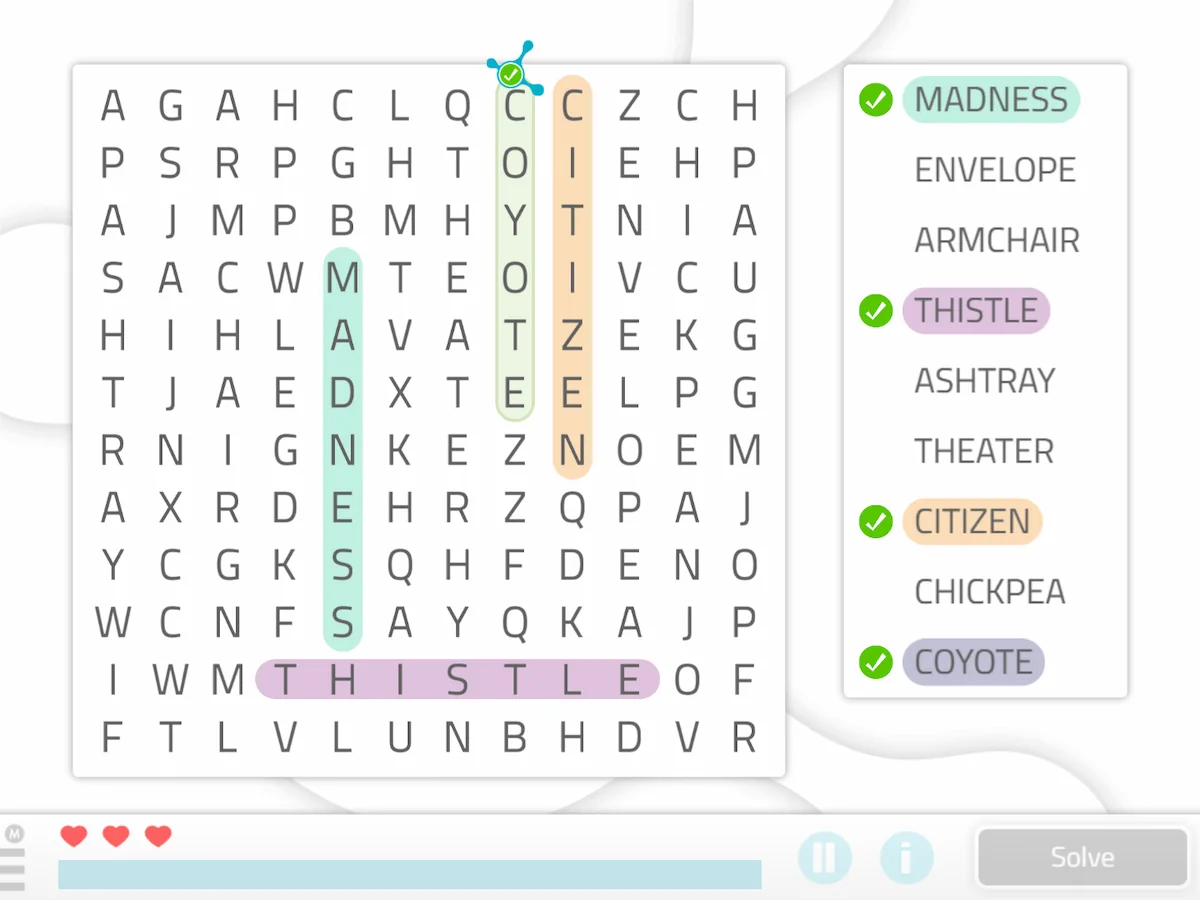
What does this activity target?
It trains selective attention, sustained attention and processing speed.
Activity personalization
For example, you can include the names of their grandchildren, which is ideal to boost the user’s motivation when searching for the hidden words.
In addition to choosing the words to search for in the Word Search, you can customize other aspects:
Parameters
You can select the matrix size, the number of words and the direction of the letters.
General aspects
You can adjust general aspects such as the operating mode, the maximum time, whether or not you want a visible timer, an inactivity warning and the instructions.
9. Personal Data Form
What does it involve?
Real Data Form is another of the cognitive stimulation exercises for people with Alzheimer’s. A real simulator to learn how to fill in general personal data on a form.
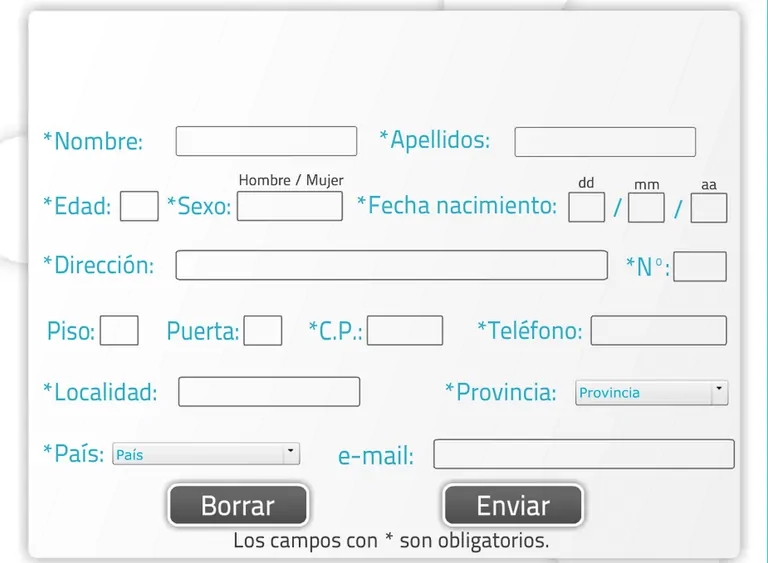
10. Hidden Letters
What does it involve?
The user has to search among a set of letters only for the indicated letter, in this case the “Q”.
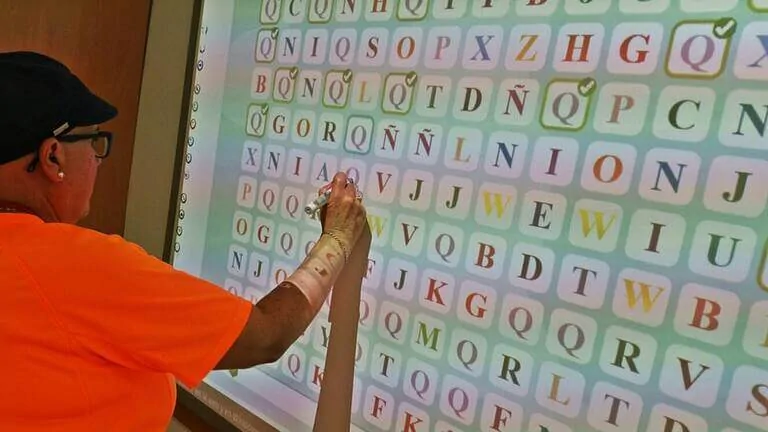
What does this activity target?
This exercise works on selective attention and hemineglect.
Activity personalization
Also, you can personalize the activity to adapt it to each user’s abilities.
Parameters
You can select the matrix size, the type and amount of letters and whether you want different colors or not.
General aspects
You can adjust the type of operation, the maximum time, whether or not you want a visible timer for the activity and an inactivity warning, modify the instructions, etc.

Subscribe
to our
Newsletter
Rehabilitation and Alzheimer’s: a necessity
Alzheimer’s disease has as its best-known symptom the progressive deterioration of memory. But that is only the beginning. Little by little all cognitive functioning will be compromised and processes such as language, attention, visuospatial abilities or executive functioning will experience notable decline. That deterioration of cognitive functioning is faithfully reflected in the person’s daily life, who also progressively sees their abilities to face the challenges of everyday life fade away. From forgetting a random word to not being able to feed yourself, only a few years may pass.
Rehabilitation is a response to the needs of a population of patients that worldwide already exceeds 36 million. Its objective is to help people with functional deficits achieve an “optimal level of physical, psychological and social functioning” (McLellan, 1991 cited in Clare L, Woods RT, Cook, Orrell M and Spector A, 2003). In people with Alzheimer’s the meaning of optimal varies greatly from one stage to another, but there are goals and cognitive rehabilitation seeks precisely to ensure that the patient is at the best possible level of functioning, according to their own capacities.
What is cognitive stimulation in adults and what are its benefits
Cognitive stimulation refers to the set of techniques and strategies to improve the efficacy of cognitive abilities and executive functions such as memory, attention, language, reasoning or planning, among others. Today the field of application is usually to address cognitive rehabilitation in therapeutic interventions in diseases and syndromes characterized by cognitive deterioration in the affected person.
Professional cognitive stimulation is a treatment designed and applied by neurorehabilitation specialists such as speech therapists, psychologists or occupational therapists, with a unique therapeutic intervention, since it depends on factors as diverse as the type of impairment, the subject’s personal characteristics and circumstances, or the particularities of the professional carrying out the intervention.
In the case of diseases such as Alzheimer’s, the purpose of cognitive stimulation is to slow cognitive decline and maintain preserved capacities and it is applied as a complement to specific drugs for dementia. In short the therapist designs a cognitive training aimed at slowing decline or cognitive deterioration whether due to normal aging, or cognitive training to improve performance in activities that require high cognitive capacities.
The professional’s role
This treatment requires an assessment by the professional of the affected person’s cognitive functions, with the specialist, based on the degree of impairment, the patient’s mood and their social and family environment, deciding what type of activities each patient should carry out, how long each should last and in what order of difficulty the tasks will be graded to monitor the evolution of the deterioration.
cognitive stimulation is based on the premise of brain neuroplasticity, that is, the brain’s ability to modify and adapt in response to environmental stimuli. This capacity of the brain to reorganize itself, creating and strengthening neural connections, is the key to recovery. The brain itself is capable of activating neuroplastic systems, but it is necessary to stimulate and modulate them through adequate therapeutic intervention to optimize results. For this, activities must be motivating and generate an adequate environment, which is why in some specialized centers the treatment is usually planned in groups for the added benefit of social interaction, to prevent abandoning activities and to stimulate the patient’s motivation to carry out the treatment.
Types of intervention
Anyone can benefit from cognitive stimulation activities , but when we refer to the professional setting there are two types of intervention:
- Neuropsychological rehabilitation, whose objective is the restoration of the subject’s situation to the highest possible level of physical, psychological and social adaptation. It is aimed at people who have suffered brain damage or have neurodevelopmental disorders, intellectual disability or mental illness.
- Cognitive stimulation, whose purpose is to slow cognitive decline and maintain preserved capacities. It is applied in neurodegenerative diseases and normal aging.
Summary of techniques and cognitive stimulation activities
There is a wide range of activities that the neurorehabilitation professional can use to train the user’s brain, starting with the classic exercise notebooks and worksheets like those offered by NeuronUP to more dynamic and novel forms such as the brain training games that are the core of NeuronUP, and less accessible techniques can also be applied such as neurotechnology, neurofeedback or transcranial magnetic stimulation among others. Below we summarize the first two types of techniques, since they are the most used means due to their accessibility that allow carrying out the vast majority of cognitive stimulation exercises for adults and children that we will see later:
Cognitive stimulation exercise workbooks
First are the workbooks of cognitive stimulation exercises, which are very useful for working on executive functions and cognitive abilities such as memory, attention, orientation, reasoning, problem solving, etc. They are very easy to obtain, since they can be bought in bookstores or even downloaded from the Internet. Usually, these workbooks are available in different levels of difficulty so they can be solved by anyone who wants to strengthen their mental capacities.
Some of these exercise workbooks can be obtained for free via the Internet such as the Cognitive Stimulation Exercise Workbook by Esteve or the Cognitive Stimulation Exercise Workbook to reinforce memory by the Consorci Sanitari Integral (CSI), although generally the content has very limited appeal and variety. For a professional intervention, it is ideal to acquire NeuronUP’s paper worksheets through the website or by calling +34 941 287 238.
Brain training
In addition NeuronUP offers cognitive stimulation activities that are commonly known as “brain training games”. All these activities have high ecological validity, are based on daily life and rest on a theoretical framework; they are a set of activities intended for professional use and whose result has already been tested in academic research with excellent results. It is important to note that for cognitive stimulation to be effective it must be adapted to the cognitive level and potential of each person, the intervention must always be supervised by a professional. The exercises and activities must be motivating and pose a challenge for the user. Session design must take all these parameters into account to improve self-esteem and the perception of self-efficacy and mood, and increase the chances of success of the intervention.
What is Alzheimer’s?
It is a neurodegenerative disease, whose cause is the progressive formation of senile plaques and neurofibrillary tangles in the cerebral cortex, as well as neuronal and synaptic loss. Dementia causes memory deterioration and the development of other cognitive deficits in areas such as language, praxias, gnosias or executive functions. The progression of the disease is inevitable so the appropriate intervention is cognitive stimulation, as it can slow cognitive and functional decline.
References for the article 10 cognitive stimulation exercises for people with Alzheimer’s
- Bahar-Fuchs, A., Clare, L., & Woods, B. (2013). Cognitive training and cognitive rehabilitation for persons with mild to moderate dementia of the Alzheimer’s or vascular type: A review. Alzheimer’s Research & Therapy, 5(4), 35. doi:10.1186/alzrt189
- Clare L, Woods RT, Cook, M., Orrell M, & Spector A (2003). Rehabilitation and cognitive training for early-stage Alzheimer’s disease and vascular dementia.
- Haskins, E. C. (2012). COGNITIVE REHABILITATION MANUAL(First Edition ed.). ACRM Publishing.
- Kelly, M. E., & O’Sullivan, M. (2015). STRATEGIES AND TECHNIQUES FOR COGNITIVE REHABILITATION.
- Olazarán, J., Reisberg, B., Clare, L., Cruz, I., Peña-Casanova, J., Ser, D., … Muñiz, R. (2010). Nonpharmacological therapies in Alzheimer’s disease: A systematic review of efficacy. Dementia and geriatric cognitive disorders., 30(2), 161–78. Available at https://www.ncbi.nlm.nih.gov/pubmed/20838046
You may be interested:
If you liked this article about cognitive stimulation exercises for people with Alzheimer’s, you might be interested in:
Recommended video
“This article has been translated. Link to the original article in Spanish:”
10 ejercicios de estimulación cognitiva para personas con Alzheimer

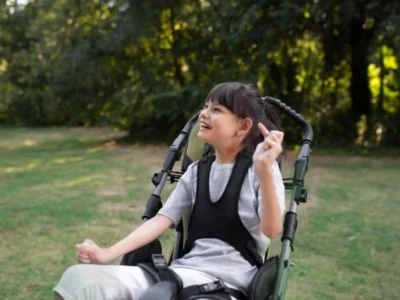



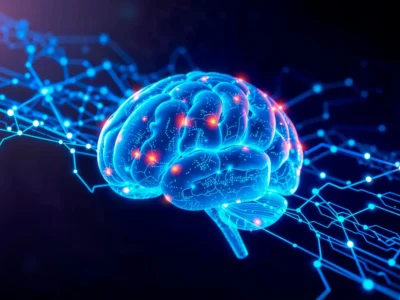
 How to explain what Alzheimer’s is to young children
How to explain what Alzheimer’s is to young children
Leave a Reply